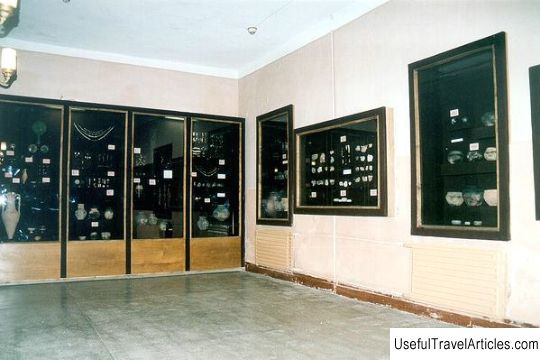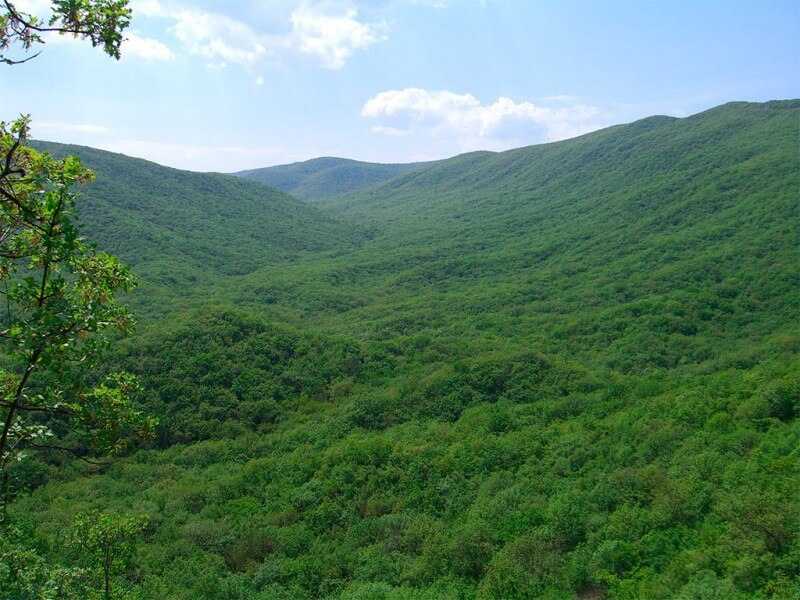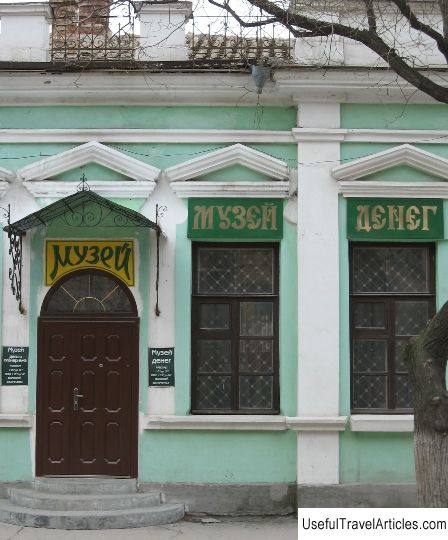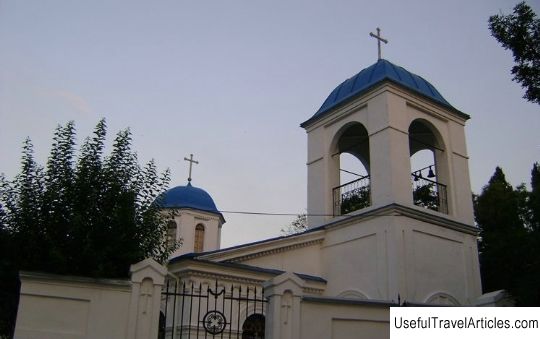A. Green Museum description and photo - Crimea: Feodosia
Rating: 8,7/10 (1676 votes) 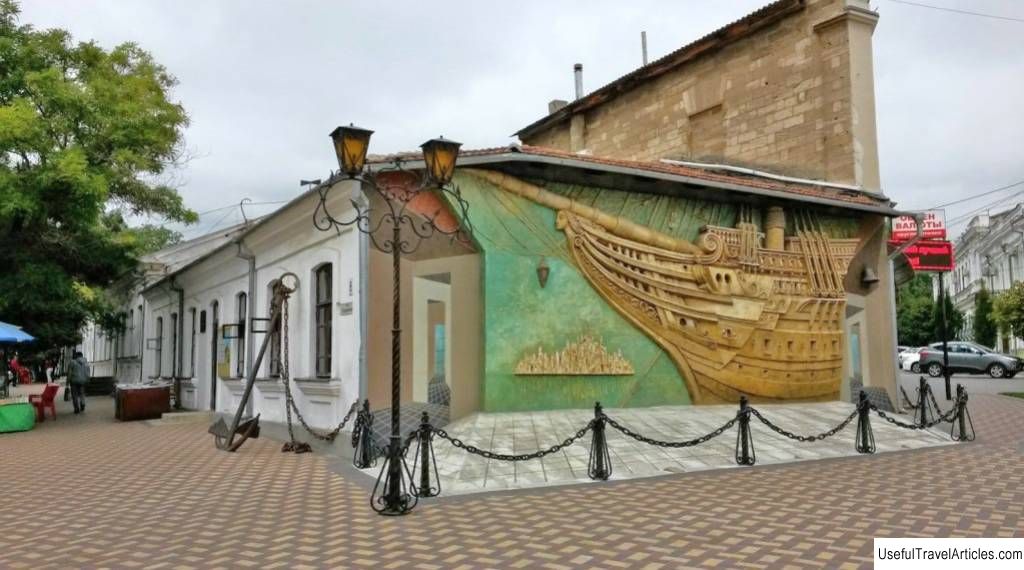
A. Green Museum description and photos - Crimea: Feodosia. Detailed information about the attraction. Description, photos and a map showing the nearest significant objects. Photo and descriptionThe most beautiful and romantic museum in Feodosia is dedicated to the author of "Scarlet Sails" - Alexander Green. The writer lived in this city for several years. The exposition immerses the visitor in the magical Greenland - the country in which the cities invented by him are located: Liss, Zurbagan, Liliana and others. Alexander GreenThe real name of this author - Alexander Stepanovich Grinevsky . He was born into the family of a Polish nobleman who was exiled to Russia for participating in the 1863 uprising. "Green", an abbreviation for the surname, is a gymnasium nickname, which later became a creative pseudonym. Since childhood, he dreamed of the sea and long journeys, and at the age of 16 he left his home in order to go to Odessa . In Odessa, he lived at random for a while, then he was able to get a job as a sailor - and made the first voyage to the sea. But a naval career did not work out - a romantic young man was categorically not suitable for sailors. He returned home, and then tried his luck again - already in Baku. He changed many occupations, but did not stay anywhere. Out of despair, entered a soldier - and deserted, military discipline was not for him. But his nature found expression in his revolutionary activities. The young man became a Socialist Revolutionary and received the underground nickname "Lanky". He did not engage in terror, but as a propagandist he was bright, eloquent and convincing. He was arrested several times, spent more than a year in prison, tried to escape twice, was released under an amnesty, arrested again ... It was during these years that he found his calling - writing. The first stories under the pseudonym "Green" were published in 1907. Before the start of the First World War, he managed to publish two collections of stories , get married and divorced, break up with the Socialist-Revolutionaries, get along with literary Petersburg in circles. In those years he wrote mostly realistic stories, exposing the problems of the existing system. It was only after several years of writing that the outlines of "Greenland" began to appear in his works - a fictional romantic country about which he wrote all his subsequent life. In the last years before the revolution, he hides in Finland, and in 1917 he returned to Petrograd. The revolution was devoid of romance. In 1918, Green was nearly shot for condemning the terror. Then he was drafted into the army, and miraculously survived typhus. He, like many other representatives of Russian literature, was actually saved by Maxim Gorky , close to the Bolsheviks. Green settled in the famous House of Arts - in the same place where N. Gumilyov, O. Mandelstam and others lived. This hungry but bright time is colorfully described in the late story "Fandango". He did not accept the revolution, but he did not reject it either - he was no longer interested in politics. In those years, Green wrote his most famous work - "Scarlet Sails" , about love and the sea, as if trying to escape from a nightmarish reality. He dedicates the story to his third wife - Nina Mironova . His third marriage finally turned out to be strong and he never parted with Nina. Nina Nikolaevna's fate was not easy. During the years of occupation, she was taken to a German labor camp, and when she returned, like many prisoners of such camps, she was accused of aiding the occupiers and ended up in the Soviet camp. She spent almost ten years, was released under the 1955 amnesty and was rehabilitated in 1997. In recent years she lived in the Old Crimea and, on her initiative, a small A. Green Museum was opened there. Green's books continued to be published until the anti-cosmopolitan campaign, when they were banned and began to be withdrawn from libraries. Green's full-fledged return to the reader had already at the beginning of the 60s. Museum exposition The museum in this building was conceived back in 1966 and opened in July 1970 . Already Anastasia Tsvetaeva called him "magic". This is really far from an ordinary "museum of the writer" with a traditional exhibition of photographs and preserved things. It was created in order to truly transport visitors to the romantic and mysterious world of Green's works. The concept of the museum was invented by G. I. Zolotukhin with the participation of artist S. Brodsky . Savva Brodsky is an illustrator and he owns many illustrations for the works of Green. The museum itself is made rather as an illustration to a fiction book than as an academic preface to it. The museum is designed like a ship that has a hold, cabins, clipper, etc. This is a real " museum of romance ", a museum of ships, travels, sincere love and true friendship. Visitors are greeted by the " hold of a frigate b> ”, with models of ships on the walls and portraits of A. Green himself by the artist S. Brodsky. " Wandering Cabin " is dedicated to the writer's childhood and the birth of romantic images in his soul. From Vyatka, he went to Odessa, to his dream of the sea. The exposition tells about his travels - to Alexandria, Istanbul, Baku. Among the exhibits are not only Green's relics - in this room, for example, there is a barrel organ, which starred in the Soviet film about A. Green - "The Knight of Dreams." Clipper room with a huge the model of a sailing clipper tells about the first literary experiments of the writer, about participation in revolutionary organizations. The main exhibit, the earliest image of the writer, a photograph of 1906, belongs to this time. The exposition tells about his life in the years before the revolution: arrests, propaganda, the publication of new stories, romantic love and marriage - and parting. The central image of the Rostral room is the famous ship with scarlet sails, the main symbol of the writer's creativity. A. Green wrote this story for many years, started, dropped and again returned to his favorite idea. The story was published in 1923. The museum contains manuscripts of the story, on sheets torn from office accounting books: in Petrograd in the 1920s, where the writer lived at that time, there was a catastrophic shortage of ordinary writing paper. In this room you can see the very first edition of the story. The museum conducts publishing activities dedicated to Green - after all, its collection contains many unique documents about the writer's life. The museum has published previously unpublished memoirs about Green, the biography of the writer, works by A. Green with unique illustrations from museum collections, etc. The museum has a library room, where numerous editions of A. Green in different languages. Interesting factsBefore his death, Green confessed and received Holy Communion. The priest said that when he asked Green if he was reconciled with his enemies, the dying man replied: “You mean the Bolsheviks? They are not my enemies, I am indifferent to them. ” In 2011, a wine festival was held under the auspices of the museum. The participants were loving couples, and they were invited to taste "Captain Gray's wine"      We also recommend reading Wiang Kum Kam description and photos - Thailand: Chiang Mai Topic: A. Green Museum description and photo - Crimea: Feodosia. |
